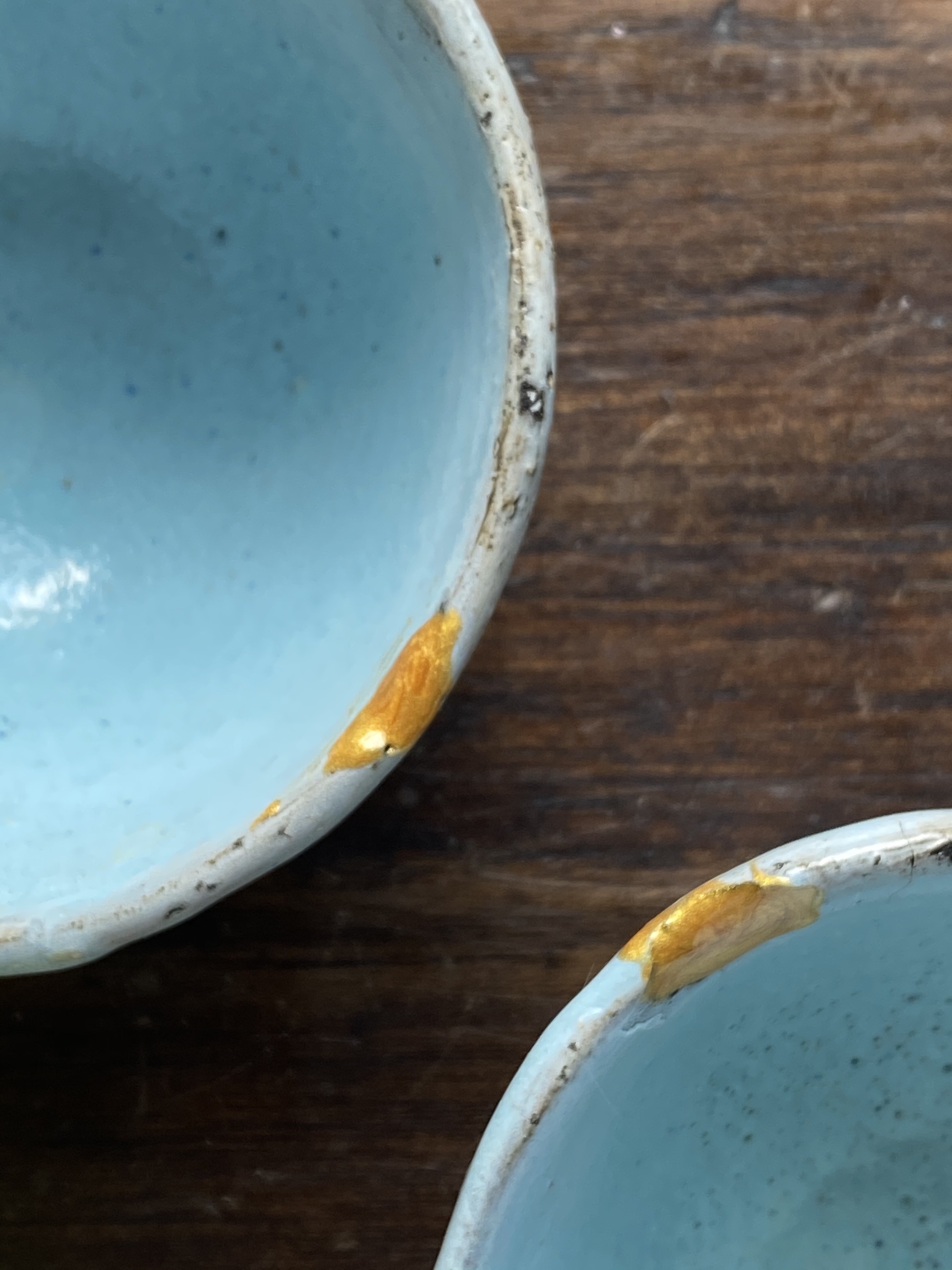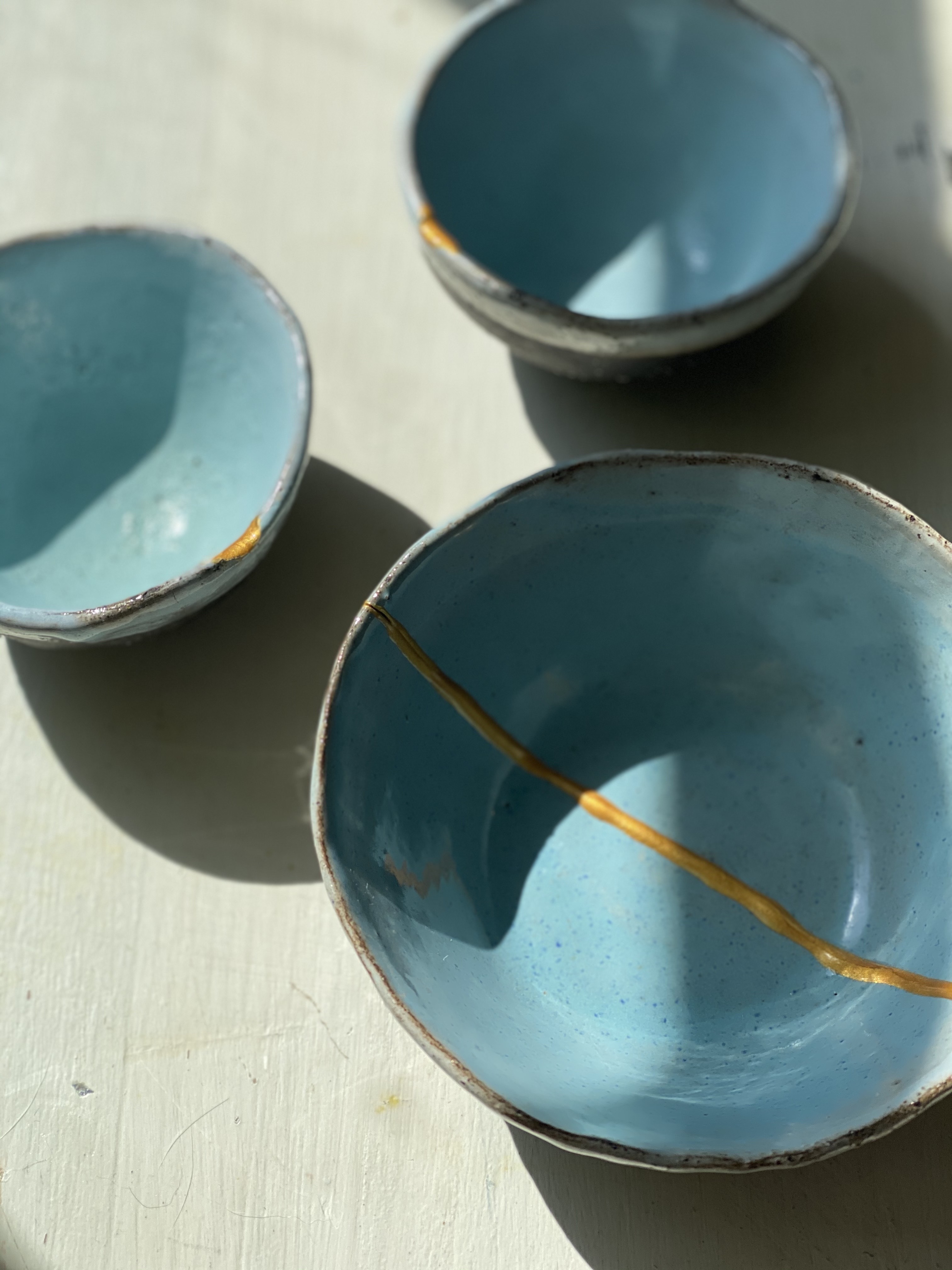Kintsukuroi – The Art of Golden Repair

Things I’ve learned so far…with a little patience and love, that which is broken can be repaired to become even stronger and more beautiful. This ancient Japanese art is possibly better known as kintsugi, or golden joinery, but I like the poetry of kintsukuroi, both as a spoken word and for the more encompassing translation. In essence it is the Japanese practice of mending broken crockery with lacquer mixed with gold powder, the process highlighting the flaws, making a virtue of them, and rendering the object even more beautiful and precious.
Kintsugi as a concept has spilled over into the areas of mental and emotional wellbeing as well, and over the past few years several books have been written encouraging us to embrace our imperfections and turn them into strengths. The idea, metaphorically and literally, is not without appeal. I, for one, find it extremely difficult to throw away precious items just because they are broken and I have a sort of hoarder drawer of stuff waiting to be mended, imaginatively labelled ‘FIX’.


As you would expect the traditional kintsugi process is long and laborious, and carried out by specially trained craftsmen. I have seen beautiful examples of kintsugi on walls and tiles as well, and sometimes even marble. (You can check out my Pinterest board if you like). Understandably a more accessible Western take on the art abounds and you can buy kintsugi bowls, mugs, floor tiles and even wallpaper .
Or if you have your own hoarder’s drawer of previously whole and precious items, you can follow my easy tutorial below and fix them yourself. There is a soothing sense of accomplishment to be gained, along with the restoration of your treasures.









YOU WILL NEED
EPOXY GLUE.
If you are fixing crockery you will only need a small amount so look for the double syringe versions rather than large tubs of epoxy or resin. These are easily available online, or in DIY or hardware stores. Check your brand is suitable for the type of repair you want to do.
I‘ve done some research into whether or not epoxy resin is food safe as I generally want to fix cups and bowls and I was unsure if they would still be fit for purpose. From what I understand epoxy requires some sort of BPA to set which could theoretically leach into food or liquids over time. Apparently though, the insides of many tinned food cans are coated in epoxy. Here is a useful link that explains more about this if your are interested or worried. Many epoxy brands claim to be non-toxic or food safe once cured (inert), including Alumilite, which I know is available in the twin syringe format I suggest. There is also a link here to Art Resin, a food safe epoxy resin brand which is certified as such in GB, USA and Europe. As always though, I would suggest doing your own research based on your project.
GOLD MICA POWDER.
Mica is a natural mineral used in multiple applications. I use the cosmetic grade powder for my kintsugi. It is easily available online.
A SMALL DISPOSABLE CONTAINER
This is for mixing the epoxy and the gold powder. You could also use scraps of cardboard as a mixing palette.
TOOTHPICKS OR ICECREAM STICKS
Wooden ice cream sticks are ideal for quickly mixing the mica into the epoxy as well as for spreading the resin onto the repair surface. Toothpicks are useful for finer work.
DISPOSABLE GLOVES
NEWSPAPER
#slow_living featured golden repair kintsugi kintsukuroi repair vintage
Inge Watrobski View All →
I work in interior and brand design for the hospitality sector. My blog explores #slow living and a sustainable lifestyle in the modern world.